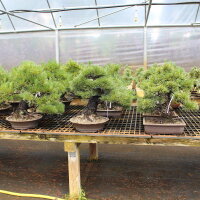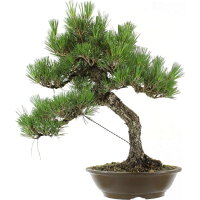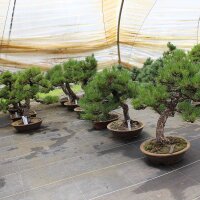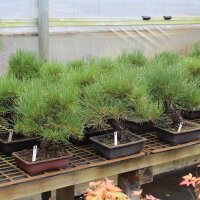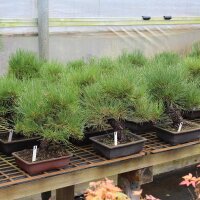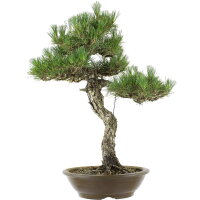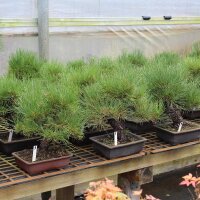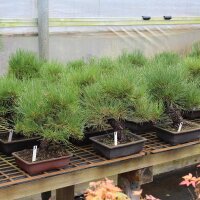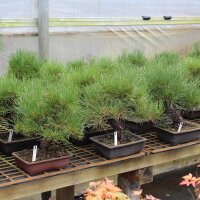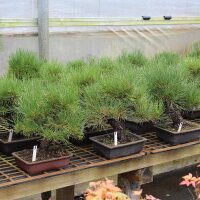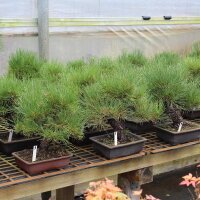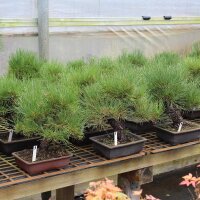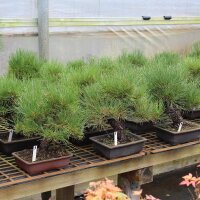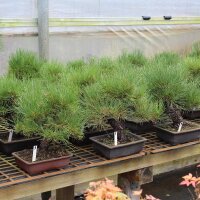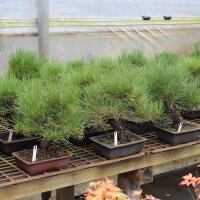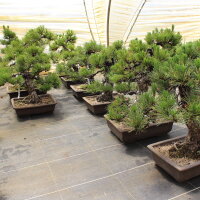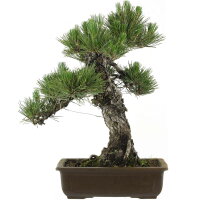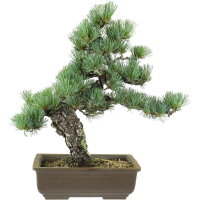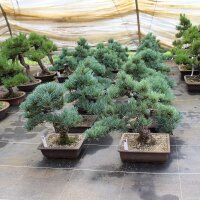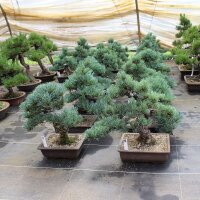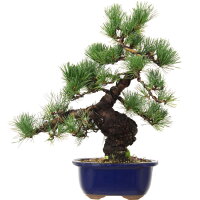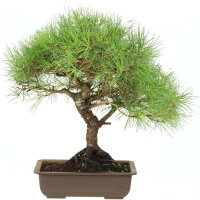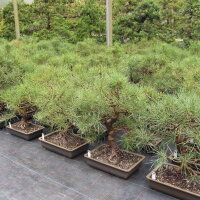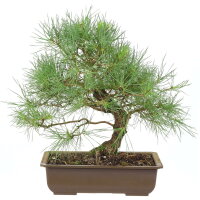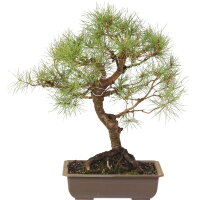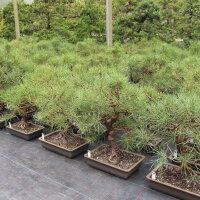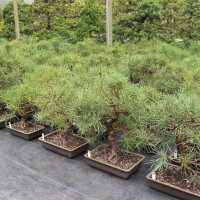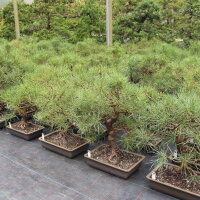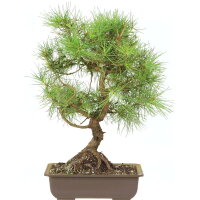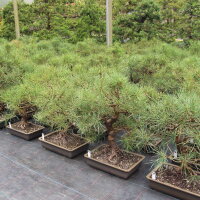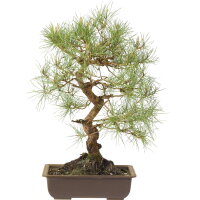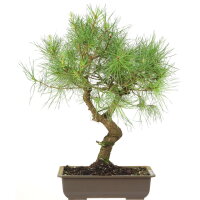Pine (Pinus)
Pine bonsai are among the classic bonsai species and are very well suited for Bonsai styling. These bonsai trees also play a central role in the design of Japanese gardens.
According to the pine species the needles are arranged in clusters of 2 to 5 needles. 5-needle pines (e.g. White pine bonsai - Pinus parviflora) usually appear softer in appearance. Once established in the bonsai pot, bonsai care is not very difficult.
We import our pine bonsai directly from Japan. This enables us to offer you a large selection at favorable conditions. Here you can buy your bonsai. You get exactly the selected bonsai, securely packaged.
Care in a nutshell
Location

Unloading an import container
Pine bonsai must have an outdoor location with plenty of sunlight during the growing season. When they get too little light, the needles become long and the lower branches weaken over time.
In winter, pines bonsai can also stand outside as long as the temperatures sink only slightly and only for a short time below 0°C. In permafrost, the frozen soil can no longer supply water. In such periods of permafrost most Bonsai pines should be set up protected from dehydration.
We place during permafrost-periods most of our pine bonsai (Japanes white pines, Black pines, Aleppo pines, Japanese red pines) at a bright location into a greenhouse. However, it must be noted that the temperature in the greenhouse is not too high. Regular ventilation is important at such a location.
For many years we have successfully overwintered the native Scots pines in a shady outdoor location without any problems. In the sun, they would be damaged by dehydration during permafrost. There were no problems with that in the shade.
Fertilization
During the growing period from March to September, you can fertilize pines bonsai with the usual Bonsai fertilizers such as Biogold or Hanagokoro. Simply press the pellets into the ground or place them on the ground (then cover with fertilizer baskets). After approx. 1-2 months the pellets are mostly used up (this depends on the temperature and the irrigation) and are replaced by new ones.
Repotting
How often you have to repot depends on the development of the roots. In contrast to deciduous trees, the growth of the roots of most conifers is rather weak. That's why they don't have to be repotted so often. All 4-5 years with older pine bonsai is normal, with younger trees possibly more frequent.
It is best to carefully lift the bonsai out of its pot and check whether the bonsai soil is strongly rooted. If so, repot. If the root development is weak, it is carefully pressed into the pot again and you can then wait 1-2 years before repotting a bonsai.
As substrate for pine bonsai a bonsai soil should be used, which does not decompose so fast. Here the Kiryu bonsai soil from Japan has proven itself.
Wiring
Pine bonsai have a very soft wood. the advantage of this is that even stronger branches can still be bent well to be brought into a new shape. A disadvantage is that the bonsai wire has to stay on the bonsai for a long time, otherwise the branches will bend back.
If the wire is pressed into the branch after months, it must be removed. In many cases it then has to be rewired again. If possible, in places that were not previously wired.
Irrigation
The root ball of Bonsai pines should not dry out extremely but should also not be kept too wet. Regular watering in small quantities with good drainage of the soil is optimal.
Pine bonsai Import
We import the Japanese white pine bonsai offered in our shop from Japan. The offer in Japan is overwhelming. In order to be able to offer the best product, we select every autumn in various Japanese export nurseries the bonsai personally. They are then shipped by container to germany and usually reach us by the middle of February.
The Bonsai pines must then be quarantined for several months to prevent the introduction of plant diseases and pests. During this time they are examined monthly by the German plant protection department.







































